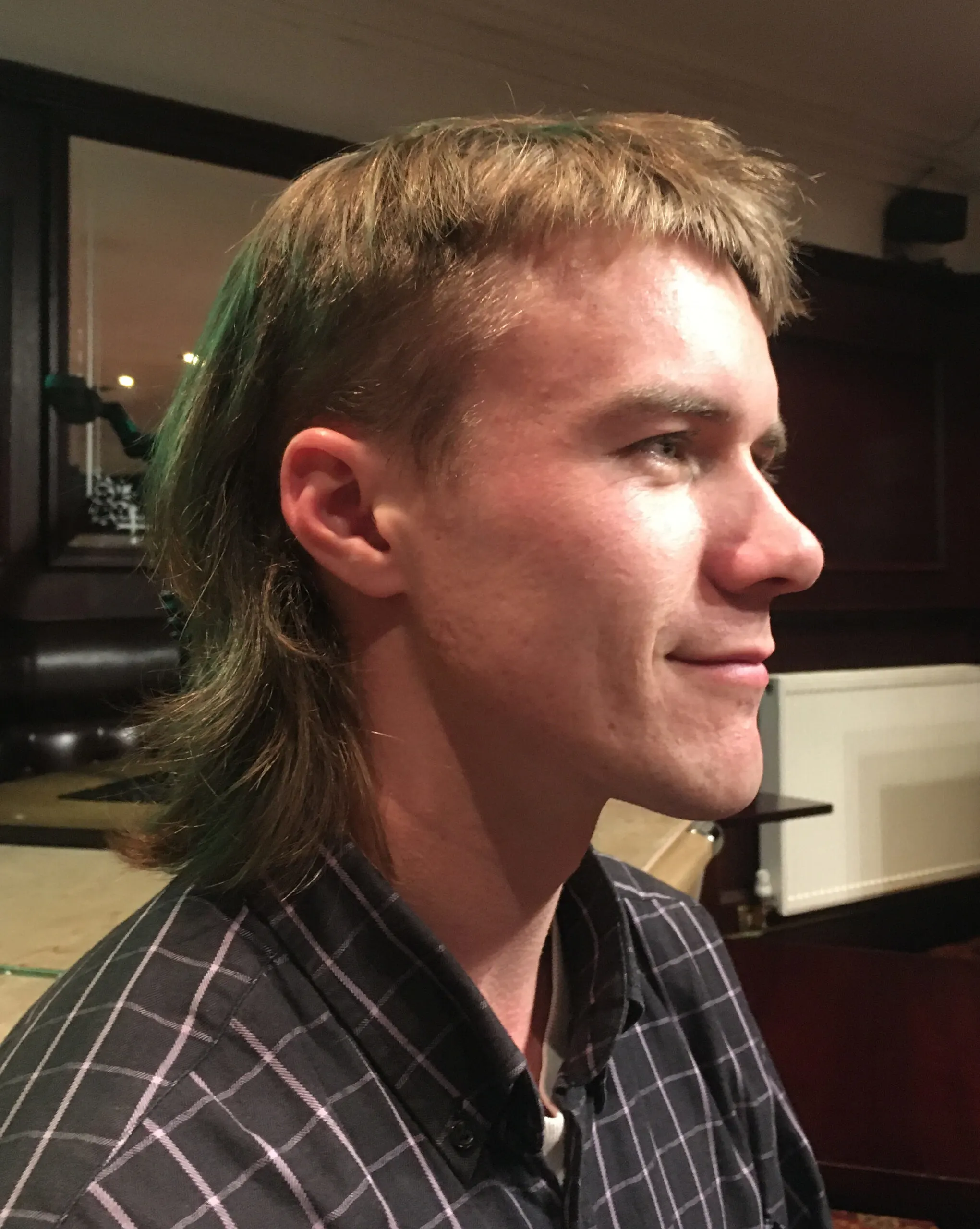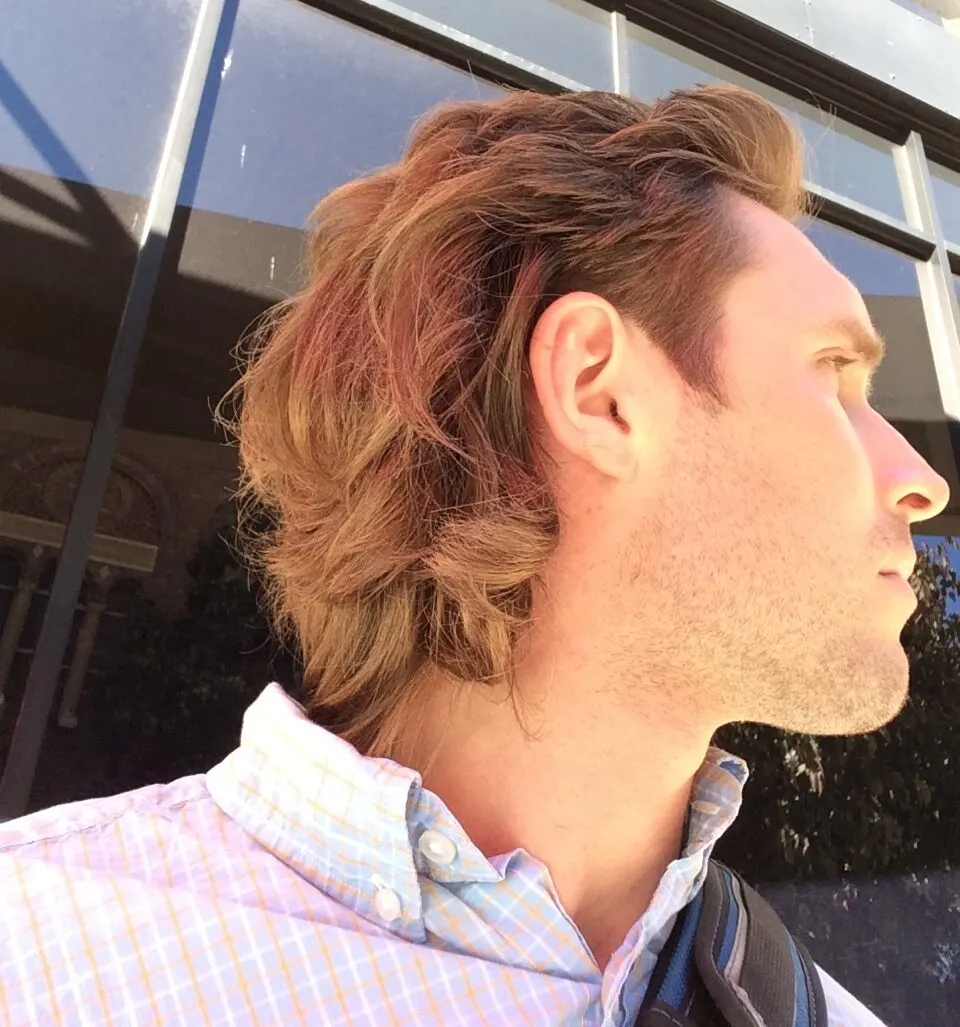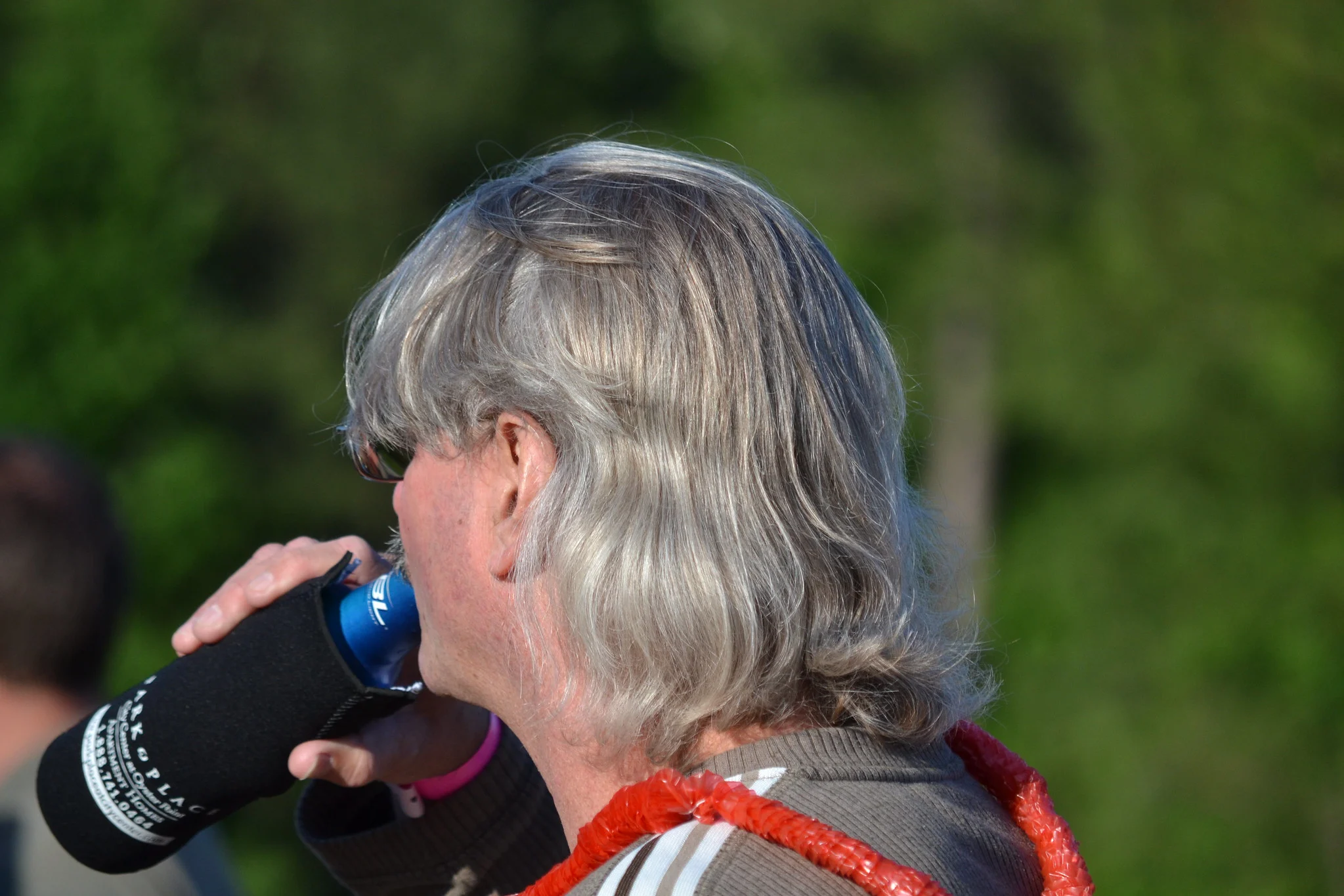Jump to:
Love them or hate them, mullets are back in a big way and showing up on guys of all styles. While they were dearly beloved in the 80s and 90s, mullets fell out of favor as men started to adopt shorter and more meticulously groomed hairstyles.
Today, there are more types of mullets than ever before as creative barbers get their hands on this iconic style.
How Many Types of Mullets Are There?
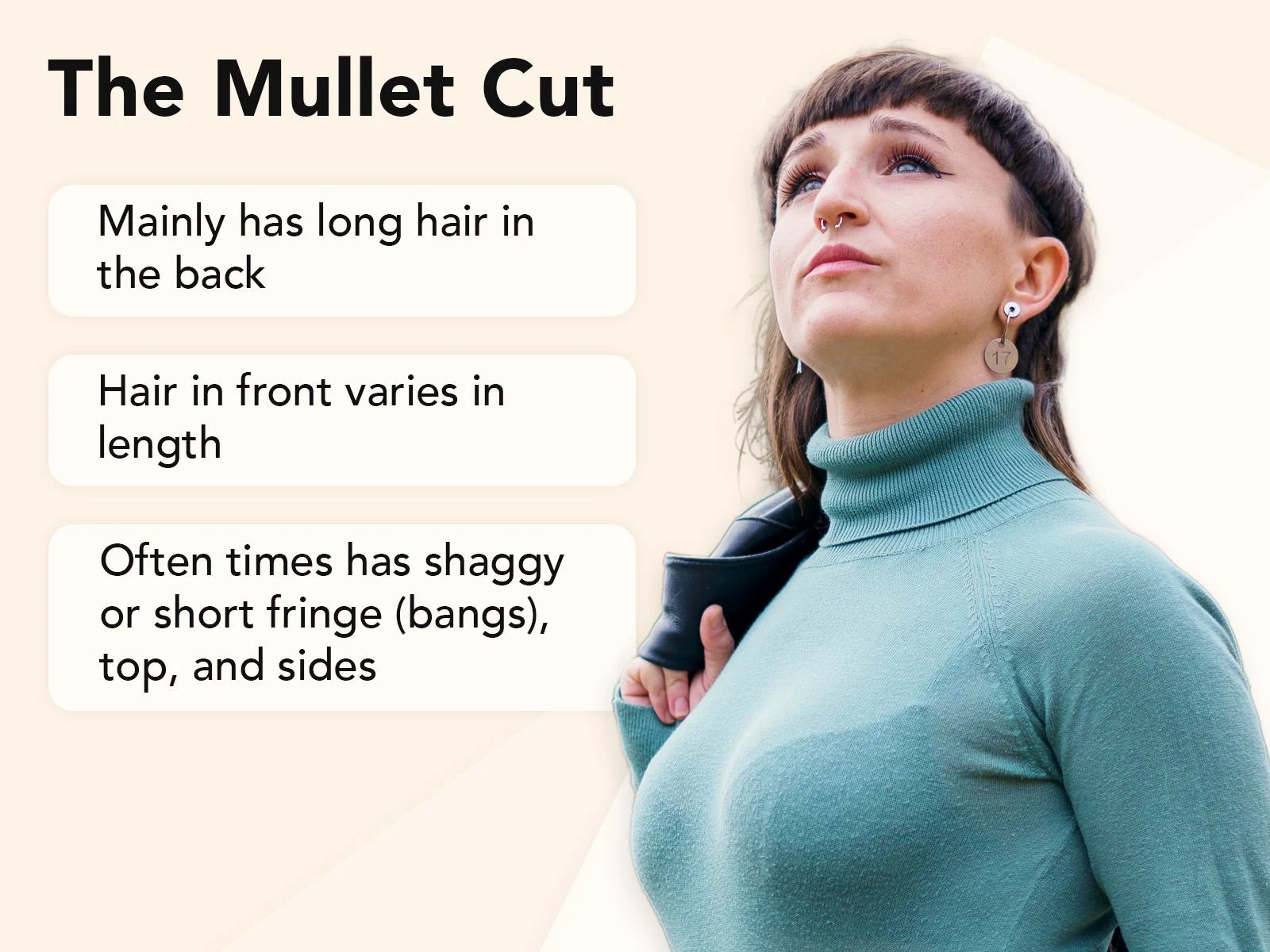
What are the different types of mullets? It’s not as easy as laying out the different types of fades, which each have a name and are easy to tell apart. When it comes to the many types of mullets, there are no universally accepted designations.
The mullet rules are simple: It just has to be shorter in the front and sides and longer in the back.
Outside of these very loose “rules,” you’ll see mullets that take on wildly different looks depending on how the style is tweaked. Cropped mullets, mullet fades, mohawk mullets, hipster mullets, classic curly mullets, and everything in between are all on the menu.
If you’re thinking about mulletizing your mop, you need to check out the many different types of mullets to see which one will work best for you.
- Do you want to go old-school with a classic mullet that would make Tracy Lawrence proud?
- Or maybe you’re thinking about a more modern mullet, a la Post Malone?
- Perhaps you need a mullet that will be easy to style for wavy or curly hair.
Whatever your mullet aspirations are, you might just need a little inspiration to make the final decision. Let’s find the magnificent mullet that’s perfect for you right now.
12 Unique Types of Mullets in 2025
Of the many types of mullets out there, we’ve found that these 12 types are the most popular right now. There’s something for everyone here, so take a peek and mull over the options to see which one you’ll be begging your barber for (or DIYing at home) soon.
You’ll find throwback styles that remind you of the classic mullets of the 80s and 90s, cutting-edge mullets that take on a high fashion aesthetic, shag/mullet mashups that combine 2 unique styles, and mullet options for kids and women that want to get in on the trend.
1. Cropped Mullet Fade

Jasmin Bauer/Shutterstock
A cropped mullet fade is pretty short on the top and slightly longer in the back with the faded areas just above and behind the ears. The short hair on top is brushed forward to create bangs that lay across the forehead.
If this particular type of mullet is calling to you, ask your barber to cut the length short all the way back to the crown, leaving extra length from the crown down to the neckline.
They’ll need to trim the areas above your ears very short with a #3 or #2 guard, and don’t worry about blending or being precise. The edgy look here comes from the defined lines!
2. Classic Mullet

Lisa F. Young/Shutterstock
Dad, is that you? This classic 80s mullet is back in fashion thanks to the rise of dad fashion, which basically made everything that was dorky cool again. You’ll earn adoring stares from onlookers (we swear that’s what the stares mean) with this classic mullet.
A perm doesn’t hurt to give the back that curly texture that goes so well with a good mullet. Keep the front and sides buzzed short and create a subtle middle part before using a little mousse or gel to keep the slightly-mussed sides in place.
3. Hipster Mullet

Asier Romero/Shutterstock
When irony enters the world of fashion and hair, things really get fun. The hipster mullet takes the basics of the classic – short top and sides, long back – and modernizes it with a little deconstruction.
Instead of nicely blended sections where the length seamlessly blends together, the hipster mullet is all about creating obvious lines of demarcation where each section ends.
The top and sides are cut to the same short length with a clear line below the temples where the hair is trimmed short in the shape of a burst fade.
The back is left long (and curly) which is the best part of this look. The result is a cross between a mullet and a bowl cut (which is also rising again) that goes perfectly with the fashionably ironic hipster vibe.
4. Temple Fade Mullet
You’d be smiling, too if this mullet belonged to you! Short and straight on the top, shaved closely on the sides, and long and strong in the back, this is a man’s mullet. This is proof that you don’t need voluminous curls or waves to bring a mullet to life.
The hair on top (down to the temples) is cut to about 2 inches, while the shorter sides are trimmed much shorter (guard #3) in a gently sloping shape toward the nape of the neck. Leave the hair from the crown downward long and let it do its thing for this look!
5. Tapered and Blended Wavy Mullet
Here’s a mullet cut with true finesse. Wavy hair works best for this flowing style that needs a lot of volume to look its best. This layered, tapered look will require a little styling in the morning to take on this shape – a hair dryer, mousse, and a round brush will be your tools.
The layered length on top is around 3-4 inches while the back is closer to 5-6 inches. A small section above and in front of the ears is trimmed and tapered shorter to really draw attention to the shape of this mullet cut.
6. Tousled Wavy Mullet
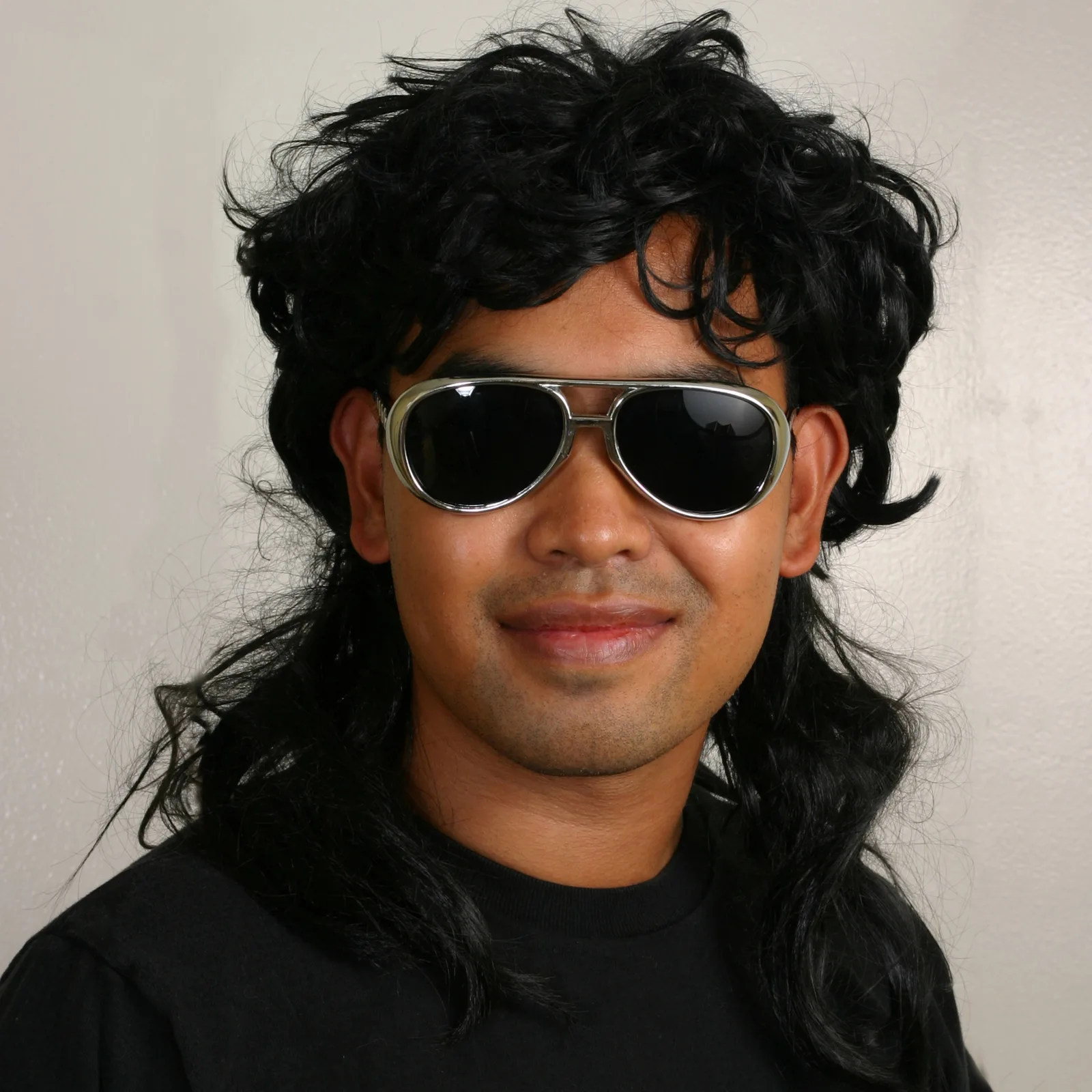
Jose Gil/Shutterstock
While we don’t know the backstory on this photo, we’d like to imagine it’s some guy’s legendary senior picture. The other kids called him Mullet Man, but show a little respect – that’s Mr. Mullet Man to you.
You’ll need plenty of length to pull off this layered, wavy mullet with a tousled style.
As you can see, no real styling is required as long as your hair has a wavy texture just roll out of bed, muss it up with your fingers, and you’re good. And whatever you do, don’t touch that beautiful length in the back. Let it grow, and the longer, the better.
7. Choppy Layered Shaglet
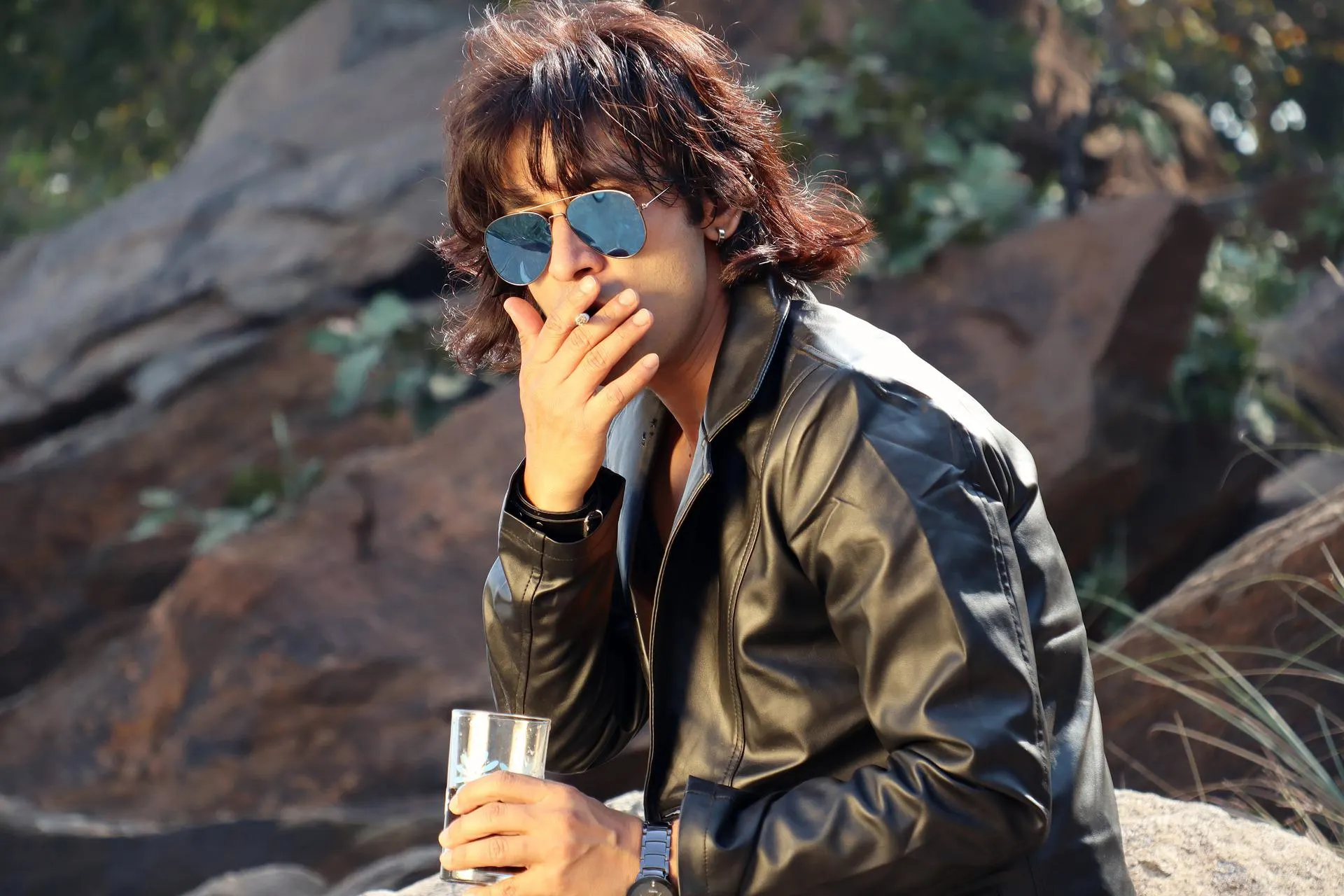
Fashionate/Pixabay
Look, we don’t condone smoking but we’ll let it slide for this cool mashup of a shag haircut and a mullet. We’re getting serious Rod Stewart vibes here and it’s honestly not even a problem because it oozes cool.
Shaglets – that’s shag + mullet – take the choppy layers of a shag and combine it with the front/back length differences of a mullet.
You’ve got the shorter hair on the top and sides with stair step layers that lengthen from the bangs down to the longest area in the back. Oh, and the earring is 100% optional.
8. Curly Middle Part Mullet

Sarah J Lee/Shutterstock
You’re gonna need a bigger perm for this one (or naturally curly hair). What’s going on here is a very classic (and classy) mullet shape that is shortest on the sides, a little bit longer on top, with long, cascading curls in the back.
You need a middle part to make this look do all the work for you. Part it, add a little gel to tame the curls and frizz, and brush the shorter sides backward to really accentuate the length difference. Fluff the back up a bit and bring it around to your shoulders to complete the look.
9. Bowl Cut Mullet
You know those sun hats with the flaps in the back that protect your neck from the sun? Yeah, you won’t need one of those ever again if you choose to rock this bowl cut/mullet hybrid.
The hair is slightly wavy, a uniform length around the front and sides (like a bowl cut), and much longer in the back (like a mullet).
This mullet isn’t for everyone, but if you want a low-maintenance cut that gets a lot of attention from onlookers, this is the ticket. Feather the front back with a little mousse to help it hold, or constantly stand in front of a fan or gently blowing breeze to copy this look.
10. Long Curly Mullet

Nevett S Matton/Shutterstock
Women can definitely rock mullets too, and this is a tame example of how longer hair can be molded into the mullet look with ease.
The bangs are cut to a brow-grazing length and follow around to the sides of the head. Tease them at the roots a bit and use some gel to keep them up and off your face.
From the temples down to the ears, the length is buzzed short to create a faux fade. Leave the length in the back alone from the crown down to the neckline, and you’ve got yourself a pretty little mullet that’s equal parts cute and edgy.
11. Shoulder-Length Mullet With Bangs

Caseyjadew/Shutterstock
This trendy youngster’s mullet has 3 basic lengths: Short bangs, medium sides, and a long back. Choppy layers bring straight hair to life for a movement-focused style like the mullet, and you can really add as many layers as you want to break it up.
Brush the bangs forward and have them point-cut or razored so they take on a piece-y look. The sides are brushed downward and forward for this look (not back, as with classic mullets) and the long back can do whatever it pleases.
12. Disconnected Mushroom Cut Mullet

Alberto Case/Shutterstock
This is by no means a traditional mullet, but this style is all about having fun and letting your personality shine through. It’s also like a two-block haircut. It’s a disconnected mushroom cut with extra-long length in the back to contrast.
We think it’s a bold and edgy look for anyone with enough length to make it work. The top and sides are cut in a blunt, uniform line around to just behind the ears.
From there, the length is unlayered and much longer for contrast. The lack of blending makes it a disconnected cut, but you can always have the short length blended into the longer section for a more seamless look.
Final Things to Consider
Let’s recap. You’ve seen 12 different types of mullets from classic to trendy and modern that have very likely inspired you to cut your hair ASAP. We support this 100%.
But before you take the leap and transform into your mulleted alter ego, do us a favor and read through these things to consider first.
- You’ll be the center of attention. If you’re planning on rocking a mullet, you’re going to get a lot of high fives and adoring looks from strangers – and a lot of snickering, too. You need thick skin to wear a mullet proudly and the ability to laugh at yourself. Some people will love your ‘do, while others find it outdated or flat-out hilarious. Be cool with both.
- There are few ways to style a mullet. If you typically like to switch things up and style your hair in different ways, a mullet is probably going to get on your nerves. Since the hair is cut into such a specific shape, you can’t really get away from the mullet look while you’re rocking one. You can brush the top forward or part it if it’s long enough (middle or side part), brush the sides back or down, or wear the hair in the back straight, wavy, or curly. You can also pull the longer section into a ponytail, but that’s pretty much it.
- You need a little length to work with. Mullets need extra length in the back to really take on the right look. If your hair is pretty short all over, just trimming the top and sides even shorter does not make a mullet. Keep growing your mane out until you’ve got a good 3-4 inches of length in the back to rock the best mullet possible and not just a “passable” mullet.
- It takes time to style a great mullet. If you want your mullet to truly be legendary, you’ll need to put a little work into it in the mornings. Mullets work best on hair with a little natural texture – wavy or curly – that can be enhanced with mousse or gel. After washing, add a small amount of product and scrunch it through before air drying. Or use heat protectant and blow dry with a round brush to get volume at the roots, subtle curves, and bends. Expect to spend anywhere from 5 minutes to 20 minutes styling your mullet each day.
- The grow-out process is pretty bad. If you’ve never worn a mullet before, you may not realize that growing it out is actually very frustrating. The length differences throughout your hair mean that nothing is growing at the same length, everything gets thin and wispy at the ends where it’s been layered, and you’ll end up having to cut it all short to achieve a uniform length again. Consider this before you rush to get this cut.
Which Type of Mullet Is Right for You?
Of the many types of mullets out there, which one do you like the best and can envision yourself wearing? A mullet is a bold and unique look for sure, but it’s also a fast-growing trend that even the most fashion-conscious can appreciate.
We really love how a mullet encourages you to show off your personality through your mane. So get some inspiration from the types of mullets you’ve seen here, but don’t be afraid to put your own personal spin on it.
Unique colors, cool fades, blunt or blended sections, and different styling methods will all help you make your mullet your own. Now that you’ve seen the different types of mullets, take a look at these helpful guides next to get you on your merry way!

